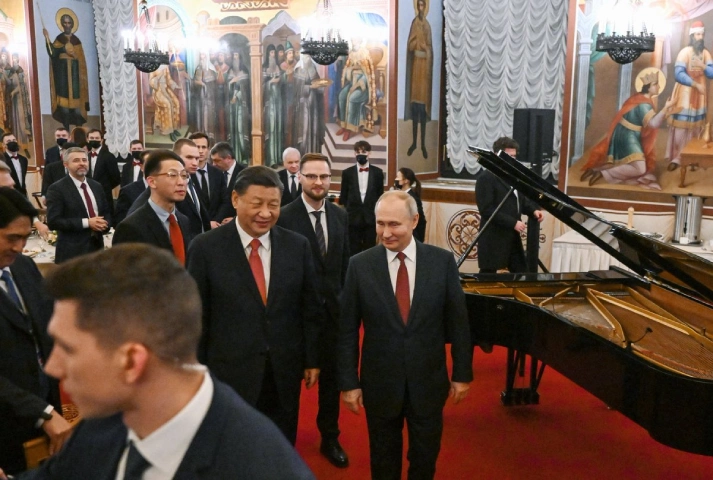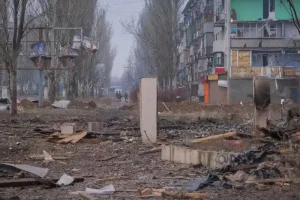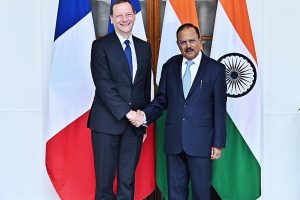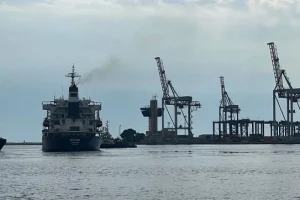After its invasion of Ukraine in February 2022, Russia began to get increasingly isolated from the United States (US) and European Union (EU) countries in world politics. President Putin in his penchant to revive the erstwhile glory of Russia miscalculated Ukraine’s capacity to resist the Russian aggression. Instead of conquering Ukraine, Russia currently is locked in protracted armed conflict with the former. Besides, owing to the admission of Finland as a member state of the North Atlantic Treaty Organisation (NATO) in April, 2023 and generous moral and material support rendered by the NATO powers to Ukraine in its war efforts, Russia is facing the US, its prime adversary, right at its doorstep. Moreover, the deadly impact of Russo-Ukraine war is felt across the world through inflationary trends, especially in the realm of food, fuel and fertilisers.
Evolving Russo-Chinese Bonds with Shared Perspectives
In the midst of its growing isolation, Russia has opted to lean on China to counter the US-EU countries. Apart from being the second strongest country in the world, China is the arch rival of the US. It is only by joining hands with China that the Russia can counter the manoeuvres of the US led alliance. The implications of growing Russo-Chinese partnership have steadily started unfolding by now. Since China’s economy is six times more powerful than that of Russia, the relationship between the two countries is asymmetric where Russia is constrained to function as a junior partner of China. However, both the countries share a similar world view. Obviously, they both are dissatisfied with the so called “rules based” international order as championed by the US and EU countries. As permanent members of the UN Security Council (UNSC) they both intend to challenge the US hegemony that characterises the current world order and promote “true multilateralism” and multi-polar world order. They also aim at de-dollarizing the world economy and facilitate trade in other currencies.
The genesis of closer Russo-Chinese bond can be traced to Russia’s expansionist ventures. For instance, when Russia annexed Crimea in 2014, the Euro-American world had slapped trade sanctions against Russia. Such sanctions became harsher and even unprecedented after the Russo-Ukraine war. Consequently, Russia’s trade dependence on China has increased. The volume of trade between the two countries was approximately US$190 billion in 2022. While China absorbed 30 percent of Russia’s exports, 40 percent of Russia’s imports came from China. China’s cheap consumer goods have captured Russian markets. The ongoing Russo-Ukraine war that has contributed to Russia’s growing dependence on China is beneficial from China’s standpoint. By capitalising on Russia’s dependence, China can persuade Russia to accept its naval presence in the Arctic, serve its energy requirements by securing oil and gas from Russia at a concessional price, gain access to sensitive technologies from Russia and secure foothold for China’s People’s Liberation Army (PLA) in resource rich areas of Central Asia.
China’s emergence as an active player in the geopolitical landscape of the Arctic removes the possibility of Russia being isolated in the region by the US and its NATO allies. #RightIsWrong https://t.co/Xhq3nnG4ON pic.twitter.com/n2DFvMsksE
— Ashok Swain (@ashoswai) April 18, 2023
At the same time, China is unlikely to tie its entire energy requirements to Russia. As far as the Eurasian overland supply of gas lines are concerned, China is also keen on striking gas deal with Turkmenistan. Apart from the Eurasian region, China is playing a prominent role in the West Asian region. Before Xi Jinping’s visit to Moscow during March 20-22, 2023, China had brokered peace between two erstwhile hostile powers such as Iran and Saudi Arabia.
China is prioritizing Turkmenistan over Russia in its next big pipeline project. “Central Asian pipelines are considered a cornerstone investment in China’s energy and geopolitical space. It’s a supply channel with strategic value that supersedes commercial concerns,” a state-oil… pic.twitter.com/SVFGTZis3g
— Mike (@Doranimated) May 25, 2023
Even though it had come up with a twelve-point peace proposals to end Russo–Ukraine war, China has so far not made any significant efforts to bring about peace between Ukraine and Russia. It has neither condemned Russia for the Ukraine invasion nor has it recognised the breakaway Republics in Ukraine. Moreover, after Xi Jinping’s visit to Moscow, Russia and China plan to develop a comprehensive strategic partnership. They already have signed a dozen bilateral agreements between the two countries in wide ranging areas including science, industry, trade, economy, commerce and technology. Xi’s visit to Moscow came at a point when International Criminal Court (ICC) had issued a warrant against President Putin for illegally deporting children of Ukraine to Russia by violating their rights. In a word, China stood by Russia in its difficult hour.
Pervasive Nature of Russo-Chinese Cooperation
Although both China and Russia have displayed expansionist tendencies, China differentiates between the issues like Ukraine from Taiwan. China considers Ukraine as an independent sovereign state. In contrast, it treats Taiwan as integral part of China that the latter aims at absorbing into mainland China by 2027. Both China and Russia are concerned about the emergence of the Quad, a grouping constituted by the US, Japan, Australia and India that is working, at one level, towards containing China’s expansionist ambitions in the Pacific region, especially the South China Sea. Besides, China has the so-called Malacca Dilemma because 60 percent of its trade goes through the Malacca strait. In order to surmount this vulnerability and counter the Quad, China is boosting its maritime power and expanding its naval presence by forging closer ties with the countries from South and Southeast Asia. China has also built a full-fledged port in Djibouti in the Horn of Africa. In its bid to become a major maritime power China is likely to rely on Russia to garner support in developing submarine and anti-submarine warfare programmes.
Furthermore, owing to similarity in perspectives, Russia and China have almost been co-ordinating their policies in Africa, challenging the hegemony of the West. Compared to Russia, China’s presence in Africa is overwhelming and in diverse spheres. However, Russia under Putin too has made headway in Africa by getting access to key strategic resources like uranium, diamond, gold, copper, platinum, bauxite, oil and gas. Apart from signing bilateral defence agreements with several African states, Russia has already emerged as the major arms supplier in Africa. After the Russo-African Summit at Sochi of October 2019, attended by all the 54 African states and 43 heads of the states, Russia is again organising another such Summit at Petersburg in July 2023. The growing Russian influence in resource rich states, especially in France’s “ex” colonies like Guinea, Mali and the Central African Republic (CAR), has virtually replaced French influence in its erstwhile colonies, an outcome acceptable to China as well.
💬Oleg Ozerov: We’re convinced that the upcoming Russia-Africa Summit will be a success.
St. Petersburg will confirm its status as the ‘Northern Palmyra,’ a center where new meanings & historical codes are born.
🇷🇺 Ambassador at Large for #Newsweek: https://t.co/xcVYJVs4Ox pic.twitter.com/dt1OABzGtP
— Russian Embassy in USA 🇷🇺 (@RusEmbUSA) May 26, 2023
Russia and China have coordinated their policies in West and South West Asia as well. They have friendly ties with Iran. While Russia has been backing the Bashar-al Assad regime of Syria, China is taking active interest in the Syrian civil war by being in touch with the Syrian government as well as the rebels in order to resolve the Syrian crisis. China contends that issues related to counter terrorism need to be addressed in the Syrian context. Furthermore, in spite of recurrent problems, the Belt and Road Initiative (BRI), China’s signature multibillion and multinational infrastructure development project is gradually surging ahead into several countries in Sub Saharan Africa, Central Asia, Europe and East and Southeast Asia. What is more, Pakistan and China have agreed to extend the BRI, in principle, via Afghanistan with the Taliban’s consent. Evidently, Russia can be beneficiary of China’s growing might in world politics.
Russia, China and India
However, evolving a common Russo-Chinese perspective on India appears rather difficult at this stage. Although China is the principal trading partner of India, it has protracted border conflict with the India over 3500 kilometre long common border. Delineating mutually acceptable border is a herculean task. Besides, China is also keen on promoting its infrastructure project through China Pakistan Economic Corridor (CPEC) via Pakistan Occupied Kashmir (PoK) which India has resisted repeatedly in international forums. Neighbouring countries of India such as Sri Lanka, Pakistan and Myanmar are heavily dependent on China which gives a feeling of encirclement from China as far as India is concerned. In contrast, the Indo-Russian ties have been well structured over the past few decades. India depends heavily on arms imports from Russia. India has also been getting oil at concessional price from Russia after the Ukraine war. In substance, choosing between India and China will always be problematic for Russia.
Irrespective of these difficulties, forums like Brazil, Russia, India, China and South Africa (BRICS), Shanghai Cooperation Organisation (SCO) and G20 have provided multinational forums to these powers to share their perspectives through negotiations. Even though Russia is keen to revive Russia, China and India partnership, India appears comfortable with playing a balancing act between the Quad along with its ongoing ties with Russia and China. In addition to maintaining strategic autonomy, India is also aspiring to play the role of a rising power in world politics.
To conclude, as the Russo-Chinese comprehensive partnership is getting firmed up, it is posing challenge to the US led order across the world and shaping, albeit gradually, the contours of a new world order in a multi polar world.
Also Read: Why India should take the Russia-China summit in its stride
(Rajen Harshé is a leading scholar in African and International Affairs and former Vice Chancellor of the Central University of Allahabad. Views expressed are personal)

















